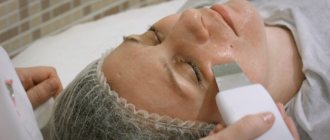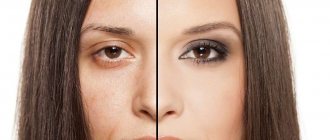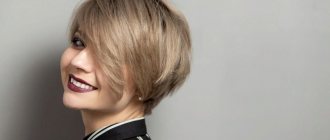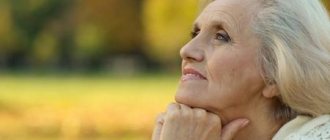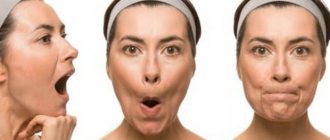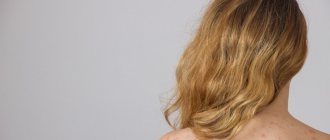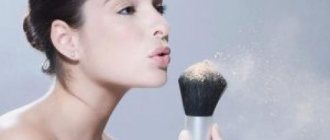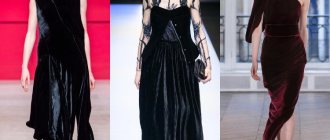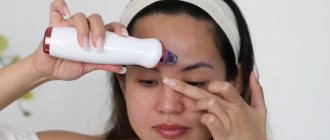angry facial expression
I really need advice from experienced, adequate mothers 
Situation: I have a “friend on maternity leave” with whom I see twice a day. We have sons of the same age—one year and 8 months old.
She has a spoiled boy, to whom she is extremely reluctant to apply any punishment. He is very greedy for other people's toys, for everything bright and new. Children at this age are all like magpies, but here the case is special. The friend tries in every possible way to satisfy her son’s appetites, “begs” toys from other children, barters, comes up with clever combinations - just so as not to tell her child a strict “no”.
A few months ago, I noticed signs of aggression in him - he pulled out toys from children, could grab hair, clothes, or bite. Mine got it too - somehow in passing he bit him on the hand. My friend hushed it up, and on the occasion of the first time, I did not draw attention to it.
And so, yesterday we walked together on the playground. A girl arrives on a beautiful little bike. My baby is allowed to play. He gets on the bike - when suddenly our “friend” runs up with a distorted face and tries to push my son off this bike. My baby simply put his hand forward, not allowing himself to be pushed, and the “friend” took him and tugged at his hand with all his heart. So much so that a few drops of blood came out.
I can’t stand aggressive children, but I understand that it can happen to anyone. And holding a grudge against a child for one year and eight months is stupid. But I was amazed by my friend’s reaction - she flew up to us to see if I had bitten him hard. And then she picked up her baby in her arms, hushed up the situation and spent the whole evening mischievously huddling away from us... No apologies (even though we are our own people), no punishment for the child!
I suspect that tomatoes might fly at me now, but I think that a child should be beaten for such behavior. Moreover, this was not the first time this way of expressing emotions took place, and not only in relation to my child. Don’t beat him, don’t get me wrong, but punish him so he can feel it.
Hello to child psychologists, but I ABSOLUTELY disagree that you cannot use physical force on a child - hit the butt, the arms, or even the lips in certain situations. I and almost all my friends were raised with the use of reasonable physical punishment - and everyone seemed to grow up to be adequate people. But what generation will be raised by our loyal and now very fashionable psychologists who promote only soft talk - the question is.
In short, it's unpleasantly creepy. I gave my baby a slap on the butt when he, albeit not intentionally, generously sprinkled sand on the children in the sandbox. And then - bite your finger and as if nothing had happened...
There would be no problem if people were strangers to me. I would stay away from them with their child. And here is a friend, even if I don’t approve of the methods of education... Today she easily calls me and asks when we’ll go for a walk and why I don’t call.
And I don’t want to see either her or her child. Your opinion? Maybe I'm being dramatic? From sitting on maternity leave for a long time, I admit this option 
Would you continue to communicate and go for walks together? Would they swallow a child’s prank, even if it was not fully conscious, but remained completely unpunished?
Dissatisfied facial expression: how to get rid of it?
How often do some of us hear: “Why are you so unhappy?” or “Are you sad, did something happen?”, although nothing happened and you are in a completely normal mood. Why does this happen and how to deal with it?
Advertising
Channel PROGRAMMER'S DIARY
The life of a programmer and interesting reviews of everything. Subscribe so you don't miss new videos.
If such questions are too frequent and begin to irritate you, perhaps it’s all about a tired morphotype. The face of a person whose signs of aging appear according to this morphotype looks tired, sad, offended or dissatisfied. If you still look fresh in the morning, then in the evening these signs reveal themselves especially clearly.
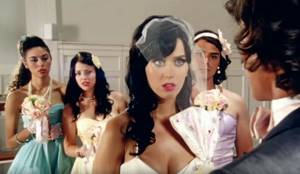
You may be interested in: Katy Perry's Style Evolution
What changes in the face?
Dark circles appear under the eyes, the nasolacrimal groove and nasolabial fold deepen. The corners of the mouth droop sadly, and marionette lines appear. The complexion becomes dull and uneven. At the same time, the oval of the face can maintain relatively even contours for a long time. If you look at the Duchess of Cambridge Catherine, Kim Basinger, Cameron Diaz or Sigourney Weaver, you will clearly see how aging occurs according to the tired morphotype.
Why is this happening?
The main reason is a decrease in muscle tone and weakening of the ligaments of the facial muscles. The result of this becomes clearly visible in the corners of the eyes, where there are many wrinkles and the corners of the eyes droop, giving the face a slightly offended look. This is also why wrinkles appear on the forehead and bridge of the nose. About 30% of European women age according to this type. And poor circulation and lymph flow contribute to a dull complexion.
What to do?
First of all, you need to monitor your facial muscles and train your facial muscles. It is useful to regularly perform lymphatic drainage massage of the face and neck. And also consume more products involved in collagen synthesis.
Recommended methods for eliminating signs of a tired face can be: contour plastic surgery (fillers based on hyaluronic acid), aimed at restoring the middle third of the face, correcting marionette wrinkles, nasolacrimal grooves and nasolabial folds. The quality of the skin will be supported by biorevitalization procedures, mesotherapy, PRP therapy, and peelings. Also, according to indications, you can turn to some hardware techniques: for example, such as RF lifting, infrared lifting, laser resurfacing.
Expressions of feelings and emotions through nonverbal signals
Gestures, pantomime and facial expressions are means of communication that are classified as optical-kinetic. This system of nonverbal signals includes appearance, voice timbre, hand or head movements, and body position in space. Successful establishment of contact depends not only on what the interlocutor says, but also on how confident his facial expressions, voice, and gaze are. This is what determines the interest in studying the meaning of nonverbal signals on the part of psychologists, businessmen and people who want to build a career.
What will facial expressions tell you?
The most important element of nonverbal communication is facial expressions. American psychologist Paul Ekman developed the Facial Affect Scoring Technique, or FAST for short.
, which allows you to determine the emotional state of the patient visually. The professor suggested conditionally dividing a person’s face into three zones:
- forehead and eyes,
- nose and area around it,
- mouth and chin.
According to the FAST method, the meaning of nonverbal facial expressions is considered only in the totality of changes in at least two of these areas. Such a simple analysis of a non-verbal signal allows, for example, to distinguish a feigned smile from sincere joy.
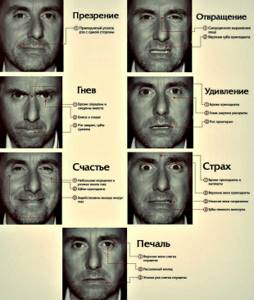
There are six basic emotions, most clearly expressed through facial expressions:
- joy,
- anger,
- astonishment,
- disgust,
- horror,
- sadness.
Involuntary or reflexive facial expressions
These are nonverbal manifestations that the person himself does not control. It is she who reflects the true emotional state.
We propose to consider the most significant non-verbal manifestations of feelings reflected in facial expressions, which are schematically depicted in the picture:
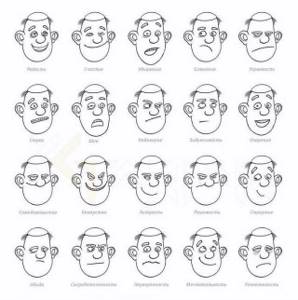
- The emotion of joy
is reflected in the area of the forehead and mouth. The corners of the lips are raised, the teeth are slightly open. Light wrinkles appear around the eyes. The eyebrows also rise slightly in relation to the bridge of the nose. - The face of a person who is experiencing happiness
is relaxed. This is expressed by half-closed upper eyelids, slightly raised eyebrows, and a radiant gaze. The corners of the lips are drawn towards the ears. - Surprise is
characterized by raised eyebrows, rounded eyes, and a slightly open mouth. - Doubt
is expressed in a person’s gaze shifted to the left. It is the left hemisphere of the brain that is responsible for analyzing the situation. The position of the lips resembles a sarcastic grin, that is, only one edge of the lips is raised. - Sullenness or despondency
is expressed by drooping eyebrows and corners of the mouth. The look is dull, indifferent. - The face of a frightened man is tense. Fear
is expressed in raised eyebrows and wide eyes. Teeth are partially visible through parted lips. - shock
is expressed by facial expressions . - A one-sided grin, a sideways glance, narrowed eyes and a raised eyebrow - this is what mistrust looks like.
- The gaze of a person thinking about a problem
is directed upward. The corners of the lips are slightly lowered. - Wide-open, sparkling eyes, raised eyebrows and a slightly open mouth express joy at the brilliant idea that has come to mind
. - A person happy with himself
looks relaxed. His eyebrows and eyelids are lowered, and his lips are folded into a half-smile. - squinted
look , raised outer corners of the eyebrows, lips compressed into a string, folding into a tight smile will tell about insidious plans. - The sly man
narrows his eyes and looks away. The left or right corner of his mouth rises. - Demonstrating determination
, a person purses his lips, clenches his jaw tightly, and looks from under his brows. His pupils may narrow sharply, his gaze becomes threatening. - When embarrassed
, people look down and smile with their lips closed so that one corner of their mouth rises. The inner tips of the eyebrows creep up. - Resentment
is expressed in pursed lips, low eyebrows and eyelids. The gaze is directed away from the interlocutor. - intently
, most people move their eyebrows so that a crease forms on the bridge of their nose. At the same time, the gaze seems to be directed inwards, the chin is tense, the mouth is motionless. - Uncertainty
is expressed in a slightly confused, wandering gaze, raised eyebrows. At the same time, the corners of the lips are lowered. - dreamy
expression on the face is characterized by highly raised inner corners of the eyebrows. The gaze is directed upward, the corners of the mouth are located asymmetrically. - Fatigue
is expressed in complete relaxation of the facial muscles, including the eyelids. The lips take on a horseshoe shape, with the tips pointing downwards.
To accurately determine the emotional state by facial expressions or by a combination of non-verbal signs, it is necessary to take into account such details as the direction of gaze and the state of the pupils. If a person experiences strong antipathy towards the interlocutor, he involuntarily squints. A liar averts his eyes to the side; he is betrayed by frequent blinking or, on the contrary, by an unblinking gaze. Insincerity is evidenced by facial asymmetry and too mobile facial expressions.
What can gestures tell about a person?
Gestures and facial expressions are an inexhaustible source of information about a person. This should not, of course, be taken as a universal way of obtaining information about the intentions or thoughts of the interlocutor, because one must always take into account the individual context, the individual habits of the partner and the environment in which the conversation takes place.
Facial expressions can also speak about the purely physiological state of a person. However, there are some general behavioral patterns, knowledge of which will help you navigate a specific speech situation.
The face and eyes are rightfully considered the most expressive parts of the body when it comes to facial expressions.
- A direct gaze, long and continuous eye contact with the interlocutor indicate interest, a mood for dialogue and a high level of trust.
- Closed and slightly lowered eyes - physical or emotional fatigue, passivity, disinterest.
- A squint is traditionally read as a sign of either increased attention, or as evidence of malicious intent, a negative attitude towards the interlocutor.
- A bowed head and a bottom-up look are subconsciously perceived as a sign of aggression, readiness and desire to use force.
- A bowed head with a bent back, on the contrary, indicates a desire to please.
- A “running”, constantly evading gaze signals uncertainty or anxiety in the interlocutor. Or that the context of the conversation makes him uncomfortable.
- Looking from the side - skepticism or distrust.
- Raised eyebrows, wide eyes and a slightly open mouth - surprise.
- Fine wrinkles around the eyes indicate joy.
- Tightly compressed lips, frowning eyebrows and widened, as if “inflated” nostrils - anger.
- If a person wrinkles his nose, it is quite possible that he is experiencing disgust. This instinctive reaction to a bad smell also works on a more symbolic level.
Head position
The position of the head itself can tell you a lot:
- Head at the level of the interlocutor - readiness for dialogue.
- Slightly raised with a protruding chin - self-confidence, high self-esteem, arrogance, readiness for action.
- A head tilted to one side or down indicates weakness, fatigue, and a willingness to compromise.
Gesticulation with hands
- Involuntary manipulations with wardrobe elements, foreign objects or the face (rubbing the nose or earlobe) can indicate strong excitement, anxiety, that the interlocutor is waiting for something or is not sure about something. Such gestures, oddly enough, are designed precisely to hide excitement and stress and distract the person himself from them.
- Open, raised palms - this gesture is used in a situation of explanation, persuasion. You could say that this is a kind of stop sign.
- Hands folded into a “lock”, covering certain parts of the body, hidden in a pocket - this often indicates uncertainty and wariness. A person unconsciously resorts to defensive gestures when he feels threatened.
- Hands behind your back are perceived as a signal of unpreparedness for dialogue, a signal of timidity and doubt.
- If the arms hang freely along the body, this can be read as a symbol of passivity.
- Hands clenched into a fist are perceived as a sign of determination, aggression or concentration.
Shoulder gesture
- A person is perceived as confident and decisive when they move their shoulders freely.
- Signs of high self-esteem and a desire to act include a protruding chest with shoulders pulled back.
- On the contrary, the “sinking” of the thoracic region is often interpreted exactly the opposite. As well as shoulders pressed to the head or “falling out” forward.
Gait and posture
- A confident person has an upright posture and does not slouch.
- Although slouching can be, for example, a sign of an inactive, sedentary lifestyle, it is often interpreted psychologically.
- The gait is fast, with active gestures with the hands, indicating determination and the desire to act.
- A shuffling and slow gait is subconsciously associated with laziness and slowness.
- A straight, measured and wide gait speaks of openness and confidence.
- Small steps indicate caution, forethought and prudence.

